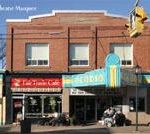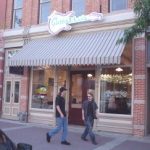A small but growing number of community corporations are operating stores and restaurants around the country. In Swanville, Minnesota, for example, some sixty families share ownership of the town’s only restaurant, Granny’s Café, which opened three years ago financed by more than $300,000 in community capital. When the general store and lunchtime gathering spot in Hebron, New Hampshire, closed a few years back, more than half of the
village’s four hundred residents chipped in to buy and reopen the store as a collective enterprise.
Read More...











